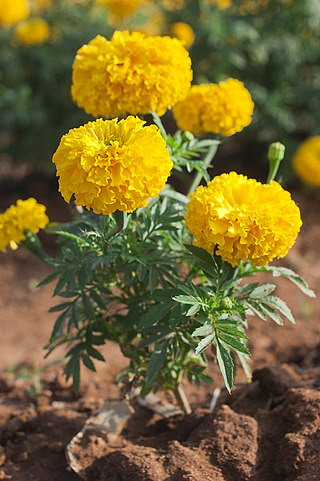
Tagetes is a genus of 50 species of annual or perennial, mostly herbaceous plants in the family Asteraceae. They are among several groups of plants known in English as marigolds. The genus Tagetes was described by Carl Linnaeus in 1753.

Psidium is a genus of trees and shrubs in the family Myrtaceae. It is native to warmer parts of the Western Hemisphere.
Harold Ernest Robinson was an American botanist and entomologist.

Baccharis is a genus of perennials and shrubs in the aster family (Asteraceae). They are commonly known as baccharises but sometimes referred to as "brooms", because many members have small thin leaves resembling the true brooms. They are not at all related to these however, but belong to an entirely different lineage of eudicots. B. halimifolia is commonly known as "groundsel bush", however true groundsels are found in the genus Senecio.

Baccharis linearis, the romerillo or Chilean little rosemary, is a common shrub in Central Chile. It is frequently found in old field after agriculture. Cecidia or galls caused by the fruit fly Rachiptera limbata grow as white, spongy and globose tissues on the twigs of the plant.
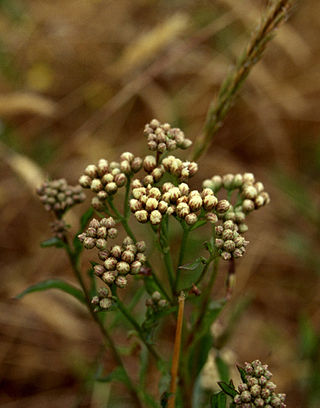
Baccharis glutinosa is a species of flowering plant in the family Asteraceae known by the common names saltmarsh baccharis and Douglas' falsewillow.

Bidens laevis is a species of flowering plant in the daisy family known by the common names larger bur-marigold and smooth beggarticks. It is native to South America, Mexico, and the southern and eastern United States. It grows in wetlands, including estuaries and riverbanks.
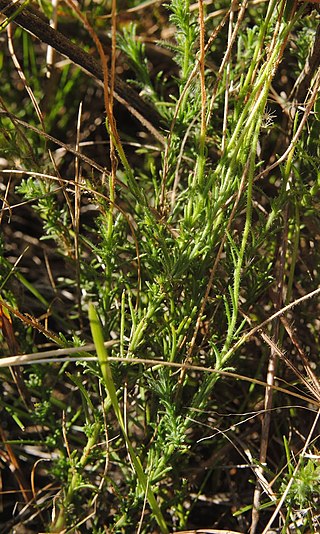
Hysterionica is a genus of flowering plants in the family Asteraceae.

Podocoma is a genus of South American plants in the tribe Astereae within the family Asteraceae.
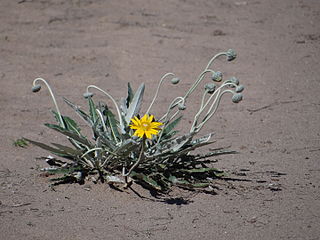
Trichocline is a genus of Australian and South American plants in the tribe Mutisieae within the family Asteraceae. It consists of one species from Australia (T. spathulata) and twenty-three from South America.
Holocheilus is a genus of flowering plants in the family Asteraceae.
Aphyllocladus is a genus of flowering plants in the family Asteraceae.

Dyckia leptostachya is a plant species in the genus Dyckia. This species is native to Brazil, Bolivia, Paraguay, and Argentina.

Gamochaeta is a genus of flowering plants in the family Asteraceae. There has not always been agreement among botanists regarding its status as a recognized genus, but it has become more accepted in recent years. It currently includes many plants that previously belonged in genus Gnaphalium. Like many species of Gnaphalium, many Gamochaeta are called cudweeds or everlastings.

Bidens triplinervia is a Latin American species of flowering plants in the sunflower family. It is native to Mesoamerica and South America, from Chihuahua State in northern Mexico to Jujuy Province in northern Argentina.
Chevreulia is a genus of plants in the family Asteraceae, described as a genus in 1817.
Leptostelma is a genus of South American flowering plants in the family Asteraceae.
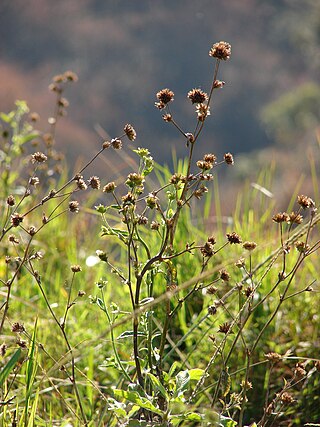
Elephantopus mollis, common names tobacco weed, and soft elephantsfoot, is a tropical species of flowering plant in the family Asteraceae.
Tagetes campanulata is a South American species of plants in the family Asteraceae. It is found in Argentina and Bolivia.
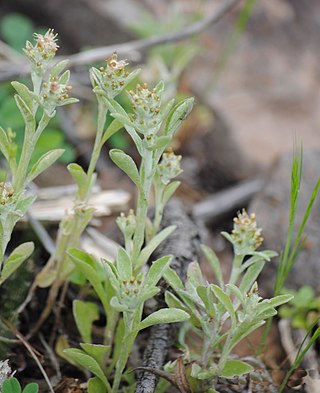
Gamochaeta pensylvanica, the Pennsylvania cudweed or Pennsylvania everlasting, is a widespread species of flowering plant in the family Asteraceae. It is native to South America and introduced into Eurasia, Africa, Australia, and North America. The pensylvanica epithet is a misnomer, as the plant is not native to Pennsylvania and only marginally naturalized there.














